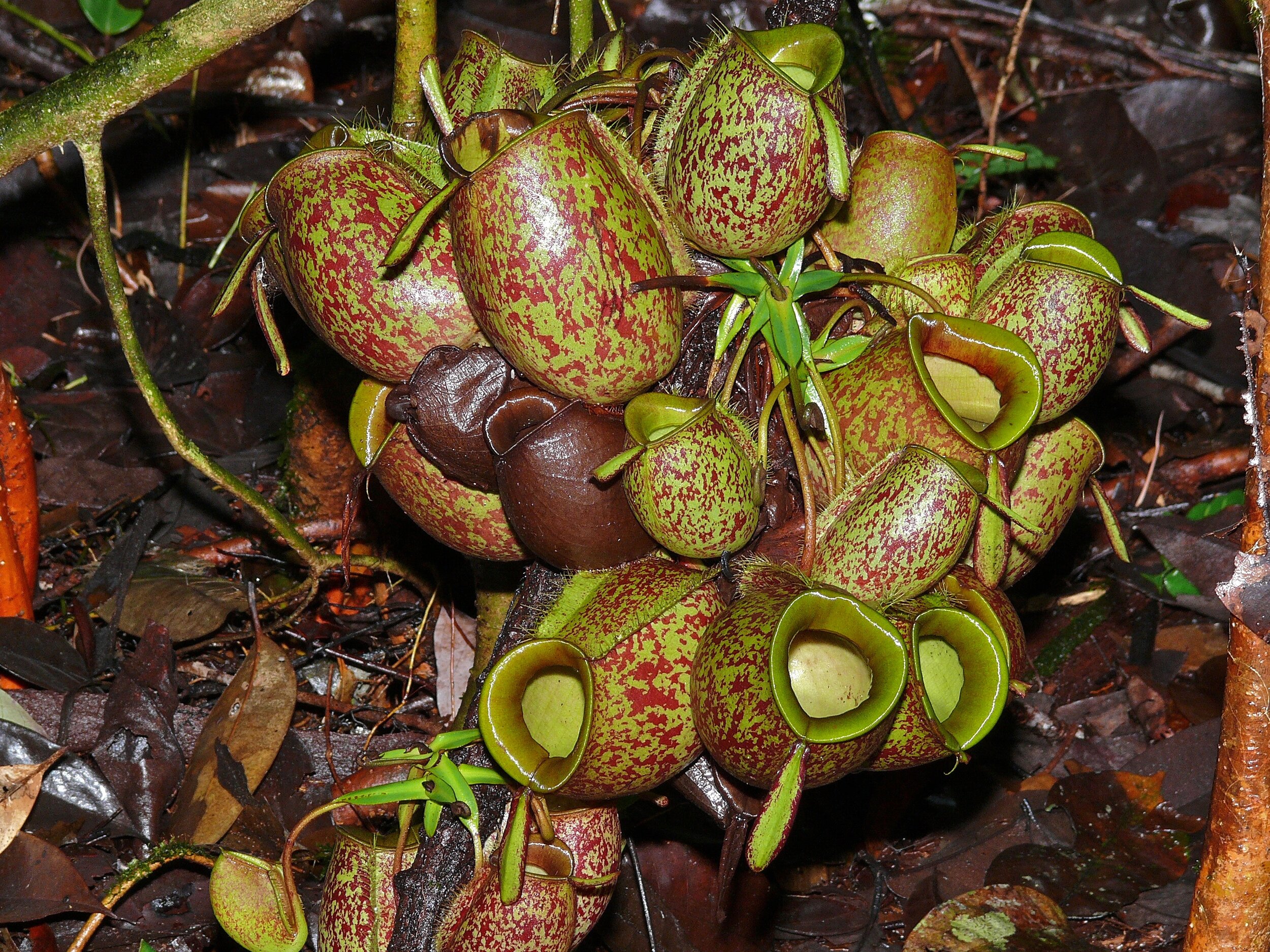Photo by Bernard DUPONT licensed under CC BY-SA 2.0
Carnivory in the plant kingdom is an interesting evolutionary adaptation to living in nutrient poor environments. It has arisen in only a handful of different plant families and indeed, the genera that exhibit it are considered highly derived. There is something to be said about a sessile organism that can take down mobile prey at the rate that most carnivorous plants do.
Perhaps part of our fascination with these botanical wonders stems from their move towards dietary habits not unlike our own. The reason for their predatory behavior is to acquire nutrients like nitrogen and phosphorus. Without these essential nutrients, life as we know it would not exist. It is no wonder then that carnivorous plants have evolved some very interesting ways of getting them into their tissues and to me, there is nothing more peculiar than the way in which Nepenthes ampullaria gets its much needed nitrogen fix.
A rather widespread species, N. ampullaria is at home in the understory of the rain forests of the southeast Asian islands. It differs from its carnivorous cousins in a multitude of ways. For starters, the pitchers of N. ampullaria are oddly shaped. Resembling an urn, they sit in dense clusters all over the jungle floor, below the rest of the plant. Unlike other Nepenthes, the pitchers have only a small, vestigial lid with no nectar glands. Finally, the slippery, waxy surface that normally coats the inside of most Nepenthes pitchers is absent in the pitchers of N. ampullaria. All of these traits are clues to the unique way in which this species has evolved to acquire nitrogen.
N. ampullaria doesn't lure and digest insects. Instead, it relies on leaf litter from the forest canopy above for its nutritional needs. The urn-like shape, lack of a hood, and clustered growth enable the pitchers to accumulate considerable amounts of leaf litter in the pitchers. Because the pitchers are relatively long lived for a Nepenthes, lasting upwards of 6 months, they offer up a nice microhabitat for a multitude of insect and even frog larvae. The collective group of organisms living within the pitchers are referred to as an inquiline community.
Over time, an inquiline community develops in each of the pitchers. This is the key to the success of N. ampullaria. As the inquiline organisms breakdown the leaf litter, they release copious amounts of nitrogen-rich waste. The pitchers can then absorb this waste and begin to utilize it. At least one study found that an individual plant can obtain 35.7% of its foliar nitrogen in this manner. It has also been demonstrated that the pitchers actively manipulate the pumping of hydrogen ions into the fluid within to keep it less acidic than that of other Nepenthes.
I don't know if I would consider this a case of herbivory as the nitrogen is still coming from an animal source but it is nonetheless an interesting adaptation. Instead of using valuable resources on actively digesting its own prey, N. ampullaria is getting other organisms to do the work for it. Not too shabby.
Further Reading:
http://bit.ly/1IRbYG9
http://jxb.oxfordjournals.org/content/61/5/1365
